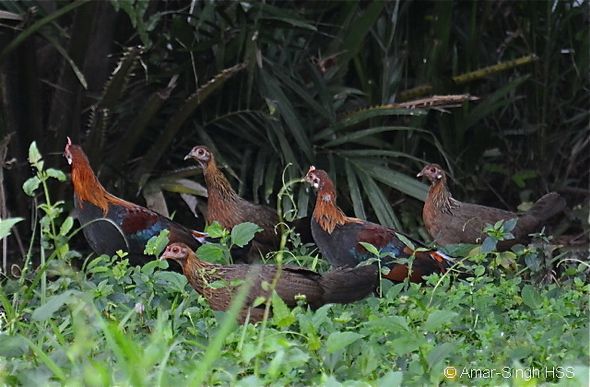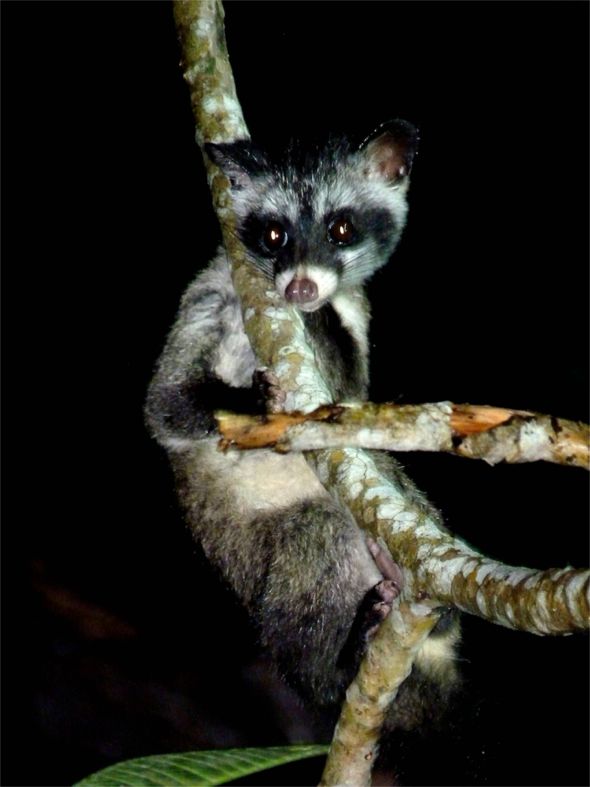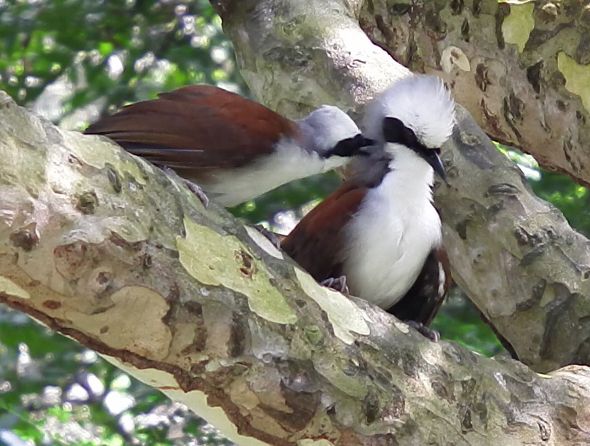
I have a reasonably large garden around my house that is home to a variety of wildlife. I enjoy them all, including the flock of up to 20 or more Red Junglefowls (Gallus gallus) (above). They nest in my flower pots and a big clump of Tiger Orchids (Grammatophyllum speciosum).

The Red Junglefowl breeds in my garden, as chicks are present most of the time. However, the attrition rate of the chicks is high. The resident Musang, also known as Common Palm Civet (Paradoxurus hermaphroditus) regularly preys on them (above). Birds like hawks, kites and even coucals (below) swoop down on the chicks from above.

Although we are not supposed to feed wildlife, I must admit that occasionally we do feed the junglefowls. We enjoy their presence and wishes to make them feel more at home in the garden. Feeding makes them less noisy and hysterical as they need not compete for food. And when the junglefowls feel safe in our trees they are quiet.
The junglefowls once warned me of the presence of a cobra when I was in the garden. They sat on the fence and gave distress calls. I was alerted to this different call and thankfully spotted the cobra.
The mynahs have also alerted me to a cobra near where I was gardening. As these birds are intelligent, their alarm consisted of a morse code of dit dit dit repeated over and over again.
Many species of birds make my garden their home. There are more now that our cats died of old age sometime ago and I have yet to get any replacement.

The most amusing birds are the White-crested Laughingthrushes (Garrulax leucolophus) (above). They call loudly for rice but as this is not their usual food they eat only a little, picking up the grains sideways. They love the bird bath.
E Anon
Singapore
30th November 2016








